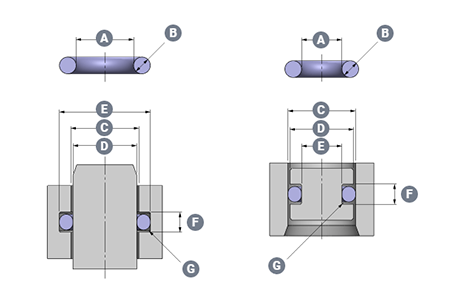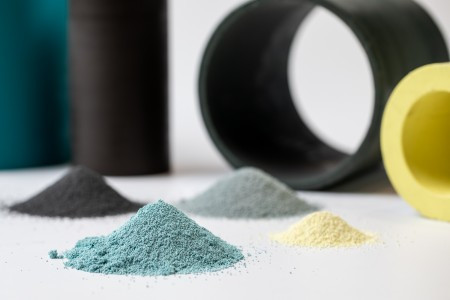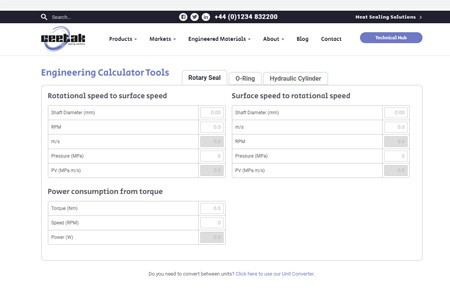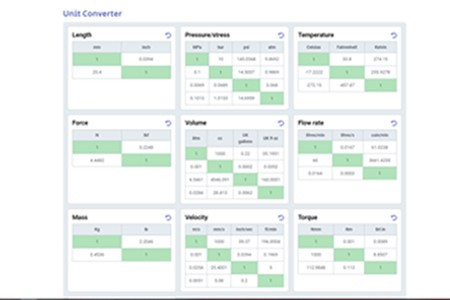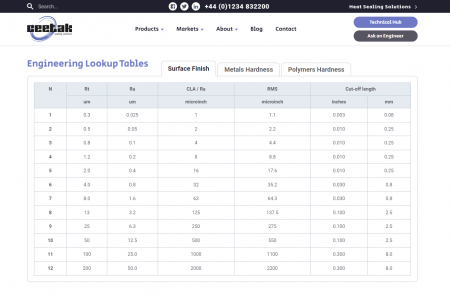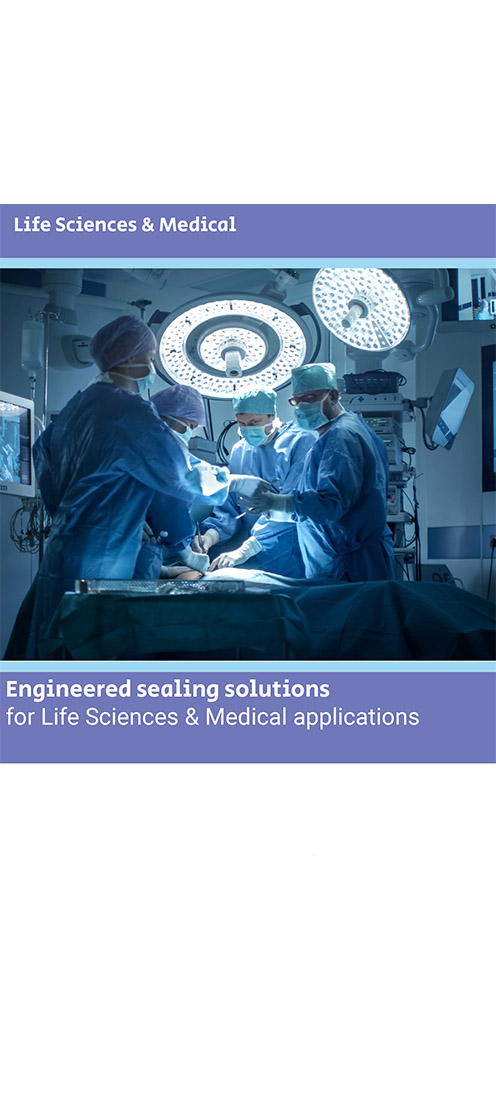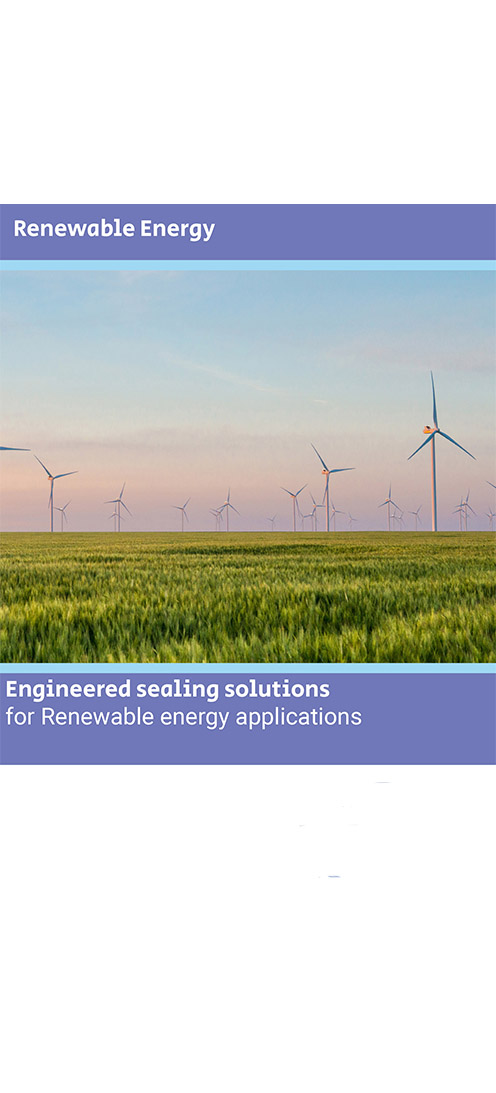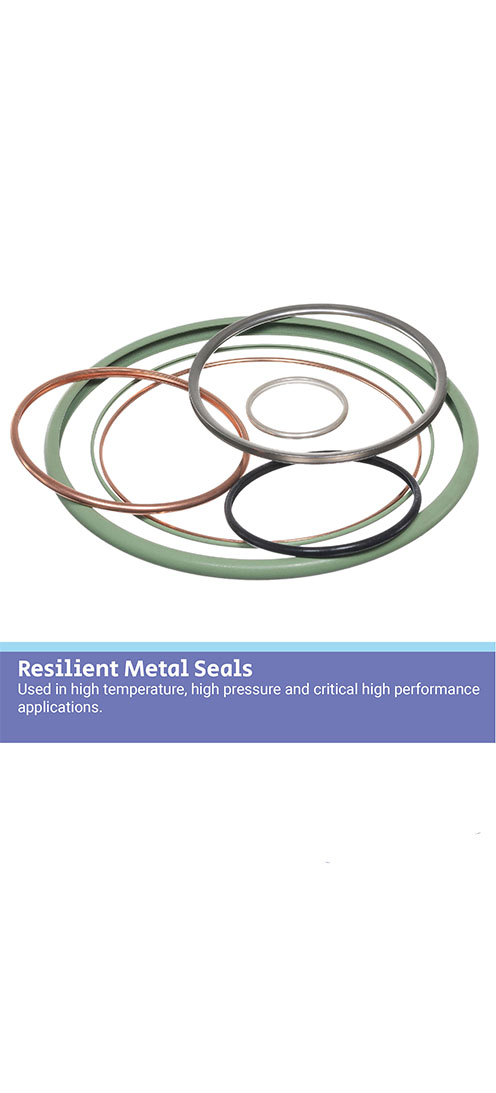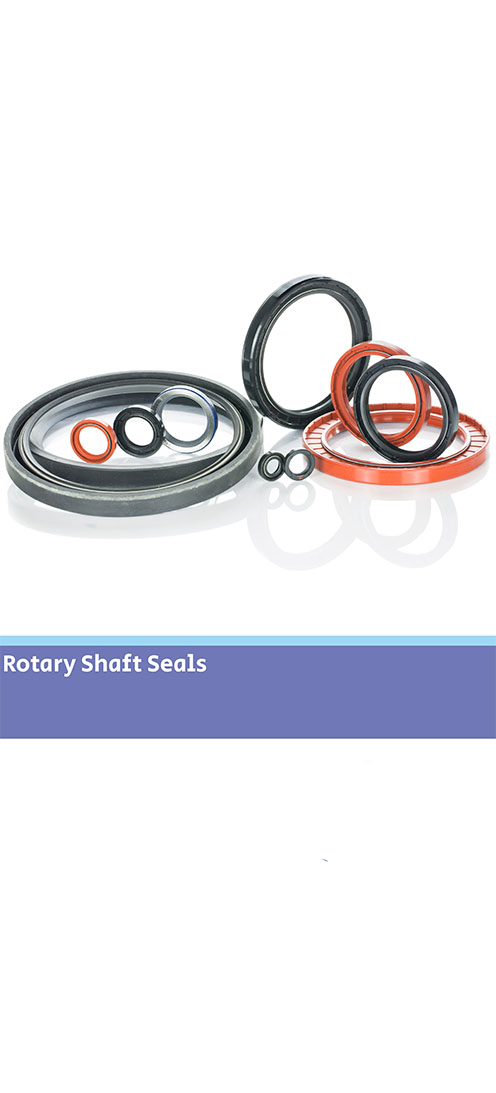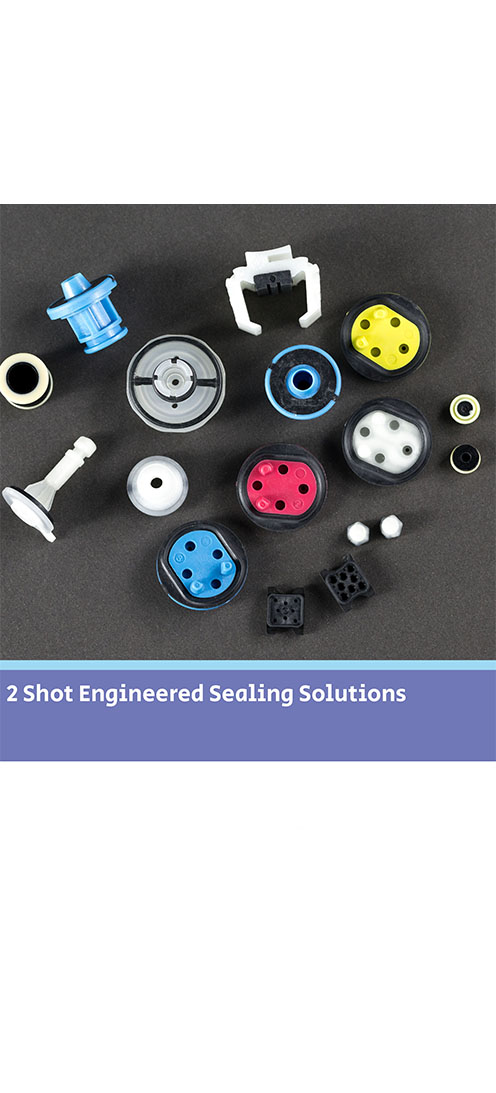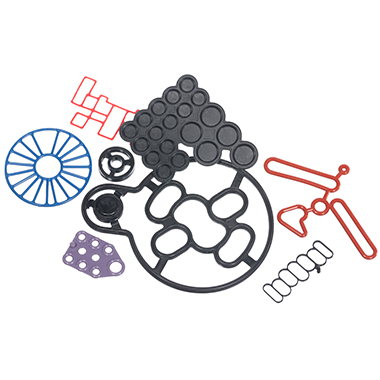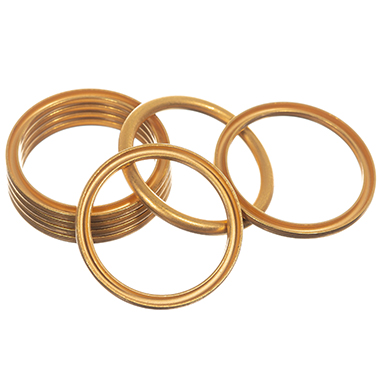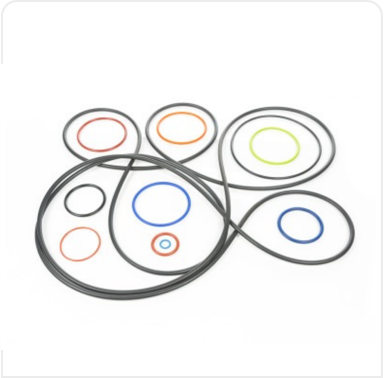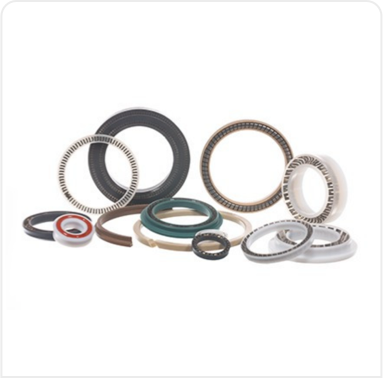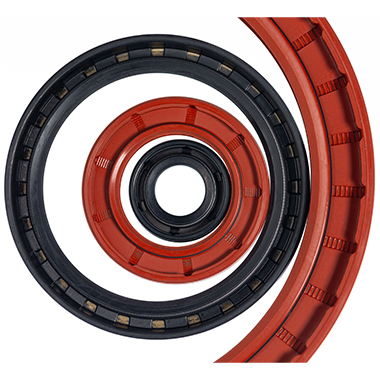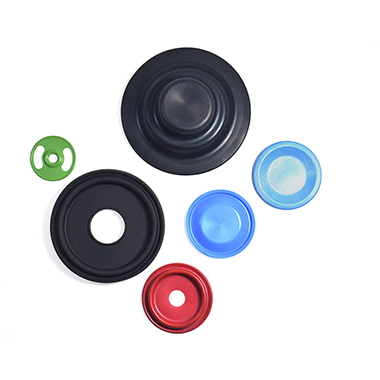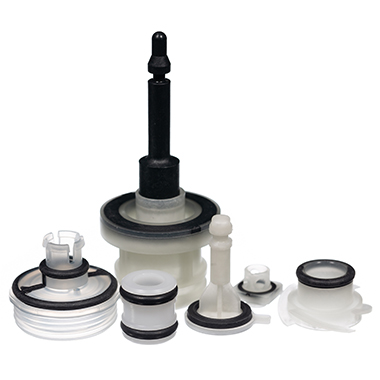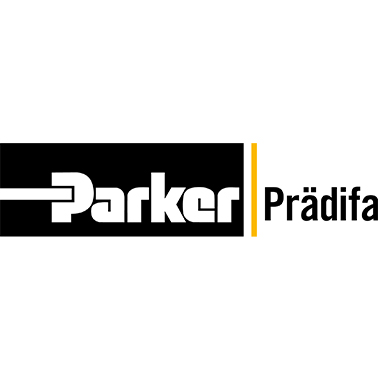Why use PTFE seals?Why use PTFE seals? Polytetrafluoroethylene (PTFE) is a thermoplastic polymer. PTFE seals can be used in a variety of sealing applications. It’s suitable when application conditions exceed parameters of elastomeric seal use but not to the extent of a metal seal. What is PTFE? It has a high melting point (342 °C) and morphological characteristics. These allow seal components made from virgin PTFE to be used continuously at service temperatures of up to 260 °C. With the addition of fillers – up to 300°C. It has the unique ability to resist material degradation, heat-aging and alteration in its physical properties during temperature cycling. Alongside this rare combination of material characteristics, PTFE also has unlimited shelf life. Why use PTFE seals? Notably PTFE demonstrates extraordinary chemical resistance. The intrapolymer chain bond strengths preclude reactions with most chemicals, thereby making it chemically inert at elevated temperatures and pressures with virtually all industrial chemicals and solvents. Only a few media (some molten alkalis) are known to react with PTFE seals making them the perfect sealing solution for highly aggressive chemical applications.PTFE also has the lowest friction coefficient of any known solid. It has self-lubricating capabilities which offers continuous dry running ability in dynamic sealing applications and has superb stick/slip capabilities. Focus on dry coatings The advantages of using PTFE in sealing applications are multiple:Functionality at high and low temperaturesDynamic sealing with high wear capabilitiesHigh pressure sealing (using combinations of PEEK back-up rings)Compatibility with highly aggressive chemical combinations.Our range of PTFE seal products include back-up rings, rod and piston seals, slipper seals and spring energised seals in a wide variety of sizes. Materials depend on application requirements. However, we offer a wide range from Virgin PTFE or including filler combinations of MoS2, glass, carbon, carbon fibre, graphite, and bronze.These characteristics make PTFE seals perfect for the demanding applications involved in Oil & Gas, Aerospace, Automotive and Chemical Process markets (to name but a few). Ceetak’s engineering team are experienced in the design of PTFE sealing solutions to meet the complex specifications these types of application demand.Read our overview and more detail about PTFE seals HERE
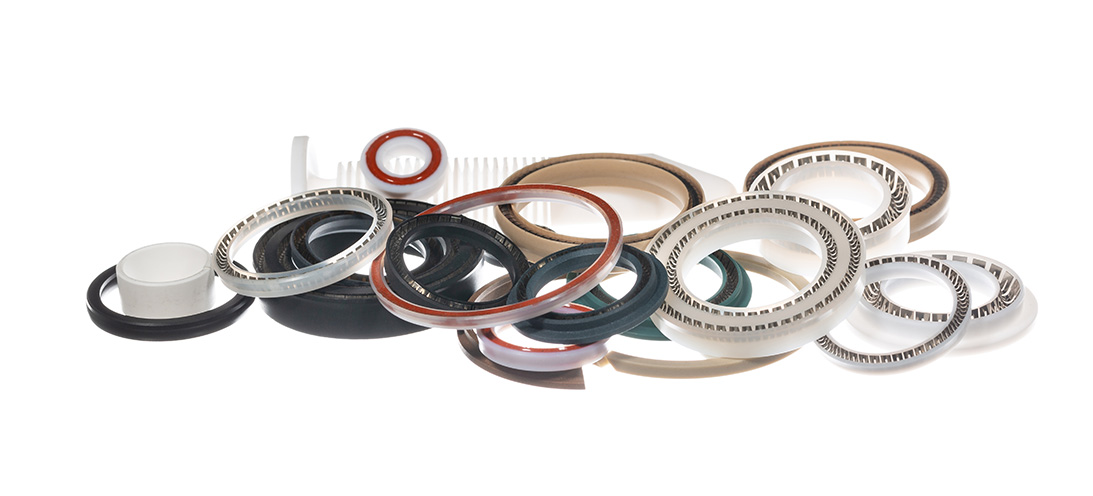
Why use PTFE seals? 
Perfluoroelastomers in valvesPerfluoroelastomers in valves Is it time to re-visit using perfluoroelastomer seals in your valves? First developed by DuPont™ in the late 1960s, perfluoroelastomers (or FFKMs), are now widely known and understood in a variety of markets. But for those that may be less familiar with these high performance materials, here is a quick recap... What are perfluoroelastomers (FFKMs)? They are essentially highly or fully fluorinated compounds with a fluorine content above 75%. They offer outstanding chemical resistance - generally better than all other elastomer types. FFKMs are often referred to as having the resistance of PTFE but in elastomer form. The term “universal” chemical resistance is commonly used; although it’s not strictly true as we will learn shortly.Unlike PTFE, the molecular make-up of FFKM includes crosslinks (or spring-like elements). This is instead of just a backbone of carbon-carbon atoms surrounded by protective fluorine atoms. These crosslinks give the FFKMs their crucial elastic behaviour (i.e. returning quickly to their original shape after being deformed). However, the crosslinks are also a drawback as they can be a weak point for a chemical attack.Different crosslinking systems can be used when developing FFKMs and the choice will determine the high and low-temperature capabilities. Compounds developed for extreme high temperatures (up to around 325°C) generally have a less broad chemical resistance compared to the lower temperature grades (up to 225°C). Similarly, FFKMs developed to have excellent resistance to specific fluids (such as amines or high-temperature steam) can have limitations of low-temperature capability or compression set. As a result, there is no universal material that covers all application criteria bases. A variety of grades Previously, the number of perfluoroelastomer grades was less prolific than other elastomer types such as FKM, EPDM, and NBR. However, over 50 years of technical developments have created a range of FFKM grades for specific and challenging applications. These applications are particularly in chemical process, oil and gas, semiconductor, and aerospace industries. The portfolio of FFKM-based compounds available to engineers is now substantial. This is due to many options being available, which include FFKMs with a hardness range of 65 to 90 durometer. Additionally, versions that meet international standards or specifications for food, medical, CPI, and oil & gas applications also being available.In addition to technical developments, manufacturers and compounders have been addressing the only real drawback of FFKM materials; the cost. They are difficult and time-consuming base polymers to manufacture. Coupled with a relatively low volume production base and sometimes lengthy processing times for seal manufacture, FFKM seals have always carried a high financial premium over FKM seals. Even several times greater than FKM itself has over NBR.Recently, there’s been more focus on making general-purpose grade FFKMs with broader temperature and chemical resistance capabilities more financially attainable. The initial procurement costs remain high compared to less capable elastomer bases. However, the overall cost of ownership may now be more appealing than it was twenty or even ten years ago. It is possible for FFKM seals to survive for much longer in applications where exposure to a variety of fluids (perhaps wider than originally specified). This considerably reduces unplanned costs associated with maintenance and downtime. Focus on dry coatings The cost of unscheduled maintenance and repair in pump and valve equipment can be high in any industry. It is exceptionally so in petrochemical, oil & gas, and semiconductor. When these costs are fully considered in the overall lifetime of a product, the initial price of seals in a valve is considered relatively minor. However, it can still be a barrier in the material selection process.With both technical and commercial developments in recent times, FFKM materials now compare more favourably against other materials. These include static, or low-duty dynamic applications in valves. In applications where persistent and sporadic issues keep coming back to cause problems, they are now a more financially attainable choice of material to avoid re-work, overhaul, downtime, customer dissatisfaction, and ultimately, more costs.Read more about FFKM as a suitable sealing material HERE

Perfluoroelastomers in valves 
Seals for Semiconductor ApplicationsSeals for semiconductor applications There are greater demands on semiconductor and electronics manufacturers for more complex and powerful devices to fulfil applications across all industry segments. High performance seals and ultra high purity elastomer materials are crucial for these critical applications. Characteristics of semiconductor sealing The technology push for more complex devices requires semiconductor companies to research and design new methods of processing within their manufacturing cells. This brings an increase in challenging technical conditions including complex chemistry, increased temperatures and stringent cleanliness within manufacturing process and the surrounding tools.Component and material suppliers face these complex challenges daily. They must follow the same rules and ensure all criteria for new processes are fully met. Suppliers must also consider the combined effects of all the conditions outlined above.Our world demands modern performance materials for the semiconductor industry. It’s therefore apparent materials previously formulated for older generation tools may not be technically capable in new and future applications. Therefore, it’s paramount to investigate and formulate new performance materials that meet each specific application.Wet cleaning and ECDWet cleaning is a method used in semiconductor manufacturing to remove any contaminants from each layer of the wafer surface, usually by using chemicals and pure water. ECD is a method of laying down the bulk of the copper wiring within a semiconductor device. Compounds for wet cleaning are engineered for static and dynamic applications with minimal metallic ion contamination.Thermal applicationsCompounds for these applications are required to have excellent thermal stability and maintain integrity at elevated temperatures often found in processes such as Oxidation, Diffusion, Annealing, and RTP.These processes are extremely challenging for seal materials. High thermal load at 300°C with temperature cycling can encourage compression set, and they must also be manufactured to limit out-gassing at high temperature to prevent contamination within the process area and offer superior physical properties. Thin film and dry etch Thin film deposition is the process of creating and depositing thin film coatings onto a substrate material. These coatings can be made of many different materials, from metals to oxides to compounds. Dry etch is a process for material removal.There are many Thin Film applications that present harsh plasma and gas environments, often at elevated temperatures. These include HDPCVD, PECVD, SACVD, PVD and ALD, along with Dry Etch and Ashing processes.Whereas traditional seals might deteriorate and fail in these conditions, our next-generation compounds have excellent chemical and thermal resistance. Consequently, they are virtually impervious to extreme fabrication processes, therefore excellent for semiconductor seals.Plasma processes are a very hostile and aggressive environment for seal materials. The corrosive chemistry at temperatures up to 250°C means compounds must be chemically and thermally stable across the operating range. Additionally, they must include low-outgassing and low particle count features. These applications are varied; from window and door seals, chamber lid seals, valve seals, and exhaust flange seals. They each require application knowledge to ensure all technical parameters are met before materials are recommended. Ultra High Purity (UHP) materials Perfluoroelastomer materialsFFKM’s contain fully fluorinated polymer chains. Subsequently, FFKM elastomers deliver ultimate performance in multiple applications. These applications include where seals encounter high temperatures and aggressive chemicals for plasma, wet and dry, semiconductor process applications. There is an extensive range of FFKM materials available. The challenge lies in selecting the correct material grade for each application because no single perfluoroelastomer can meet all semiconductor process requirements. . For example, some materials are better than others at high temperatures, some demonstrate better chemical resistance and some are poor at thermal expansion.Several compounds within our range of PERFREZ® perfluoroelastomer materials offer the best performance characteristics based on high thermal values, excellent low out-gassing and low particle count. We also offer a hybrid material which is an excellent “all-rounder” as it’s chemical formulation falls between FKM and FFKM. This means it performs consistently under slightly less demanding application conditions and with the added benefit of lower cost of purchase versus ultra-high grade FFKM’s.Other compounds within our range are very specific to semiconductor process applications such as CVD, PVD, Plasma Etch (oxide & metal), fluorine and oxygen compatibility with a high temperature threshold material for sub-fab NW /ISO exhaust line environments. As new challenging processes emerge within the semiconductor industry, further progress in high temperature materials above 300° C will be developed. We expect to add a new generation material for plasma applications to our portfolio of materials by the end of 2022. Cleanroom manufacturing Semiconductor cleanrooms must be designed to control static, out-gassing, and any contamination. This includes external particulates such as dust, dirt, airborne microbes, and aerosol particles. Just a single particle of dust or debris on a wafer or component is enough to cause a catastrophic defect (that will ultimately lead to failure of a device). Technicians create and maintain cleanrooms by removing the air and circulating it through a filtering system. The clean and filtered air back is distributed back into the cleanroom environment. Varying levels of cleanliness are possible. It depends on what is specified for each individual manufacturing environment or the finished product requirements. Different cleanliness levels are classified by the concentration of airborne particles within a measured space.Bringing in any auxiliary products (such as seals) into the environment must also maintain the same levels of cleanliness.We provide a complete cleanroom production process; from material blank production through to inspection and packaging using controlled materials within state-of-the-art cleanrooms. Our clean room manufacturing facilities are Class 7 (10,000) manufacturing and Class 5 (100) inspection, cleaning, & packaging.Read more about our expertise in the semiconductor industry and how we can help you with your seals for semiconductor applications HERE

Seals for Semiconductor Applications 
